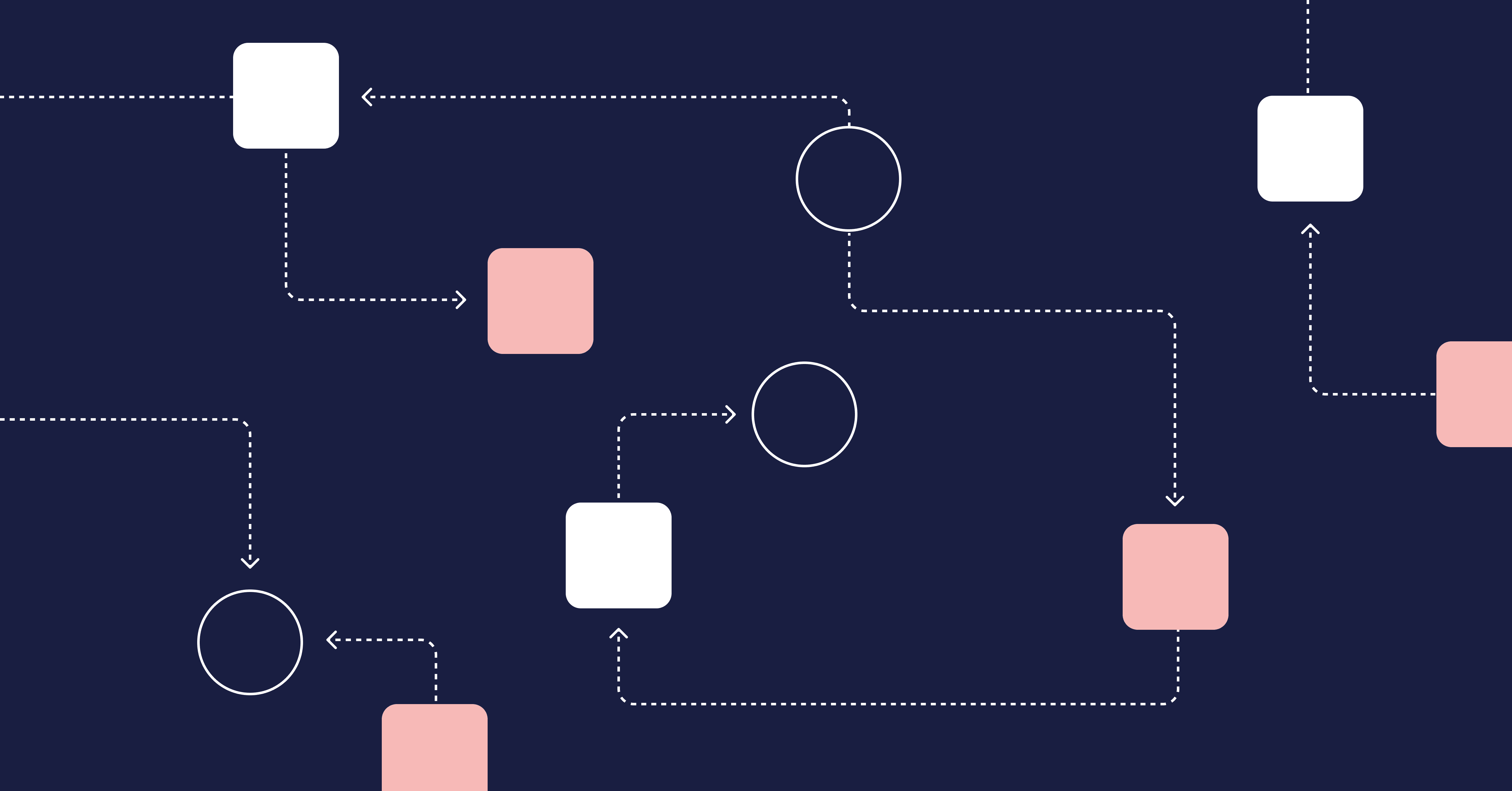According to a report by Digital.ai, 37% of software development teams in 2020 used the Agile methodology to develop their products. Just one year later, this number jumped to 86%! It looks like Agile – and in particular “scrum” which is an implementation of Agile – has become the dominant software development paradigm.
The report also revealed that 46% of companies are having difficulty consistently adhering to the Agile process. This prevents them from leveraging Agile to the fullest extent, and reaping the key benefits like iterating more quickly in response to customer feedback.
At the heart of Agile in practice are team meetings called Agile ceremonies. In this post, we’ll discuss what agile ceremonies are and go through the Agile ceremonies list to learn how you can best leverage each one to make your dev teams operate more effectively and efficiently.
Table of Contents
- What are Agile Ceremonies?
- Sprint Planning Meeting
- Daily Standup
- Sprint Review
- Sprint Retrospective
- Improve Your Agile Ceremonies
What are Agile Ceremonies?
Agile ceremonies are meetings held at key instances during a sprint. These aren’t just meetings for the sake of meetings though. And they shouldn’t dominate dev calendars.
If conducted properly, agile ceremonies should provide the framework for teams to get work done in a structured manner, set expectations, empower devs to collaborate, and ultimately drive results.
The agile ceremonies list includes:
- Sprint Planning
- Daily Standup
- Sprint Review
- Sprint Retrospective
Agile ceremonies help organizations adapt to change and succeed. With agile ceremonies, teams in your organization should benefit from the ability to adapt to changing priorities, acceleration of value delivery, increased developer productivity and better alignment to the business priorities.
Let’s dive into each ceremony.
1. Sprint Planning Meeting
Each sprint starts with the sprint planning meeting. In this meeting, the team decides what they are going to accomplish in the upcoming sprint, which gets codified in sprint goals.
The product owner is responsible for ensuring that going into the planning meeting the product backlog is up to date. Most importantly, each user story and task in the backlog should have accurate estimates for effort (typically story points) and business value.
During the meeting, the team decides which items should move from the product backlog to the sprint backlog. This requires knowing your team’s sprint capacity, i.e. how much they can achieve in a sprint. This is another reason why committing to one length of sprint, say two-week sprints, is important: It enables you to hone in on your capacity and plan future sprints more accurately.
It is really difficult to take on the right amount of work during a sprint. Taking on too little means that you’re not shipping as many features as you could. Taking on too much sets your team up to overwork and ultimately be disappointed at the end of the sprint.
Inaccurate planning also has ripple effects through a company. Other teams plan their work around when certain features will go live: marketing teams plan campaigns, account managers make promises to clients, CEOs make promises to the board.
This is why Planning Accuracy is one of the key metrics in LinearB. Our Project Delivery Tracker correlates data from project management software like Jira to development data from Git to give you a detailed and accurate picture of how accurately you’re planning your sprints.
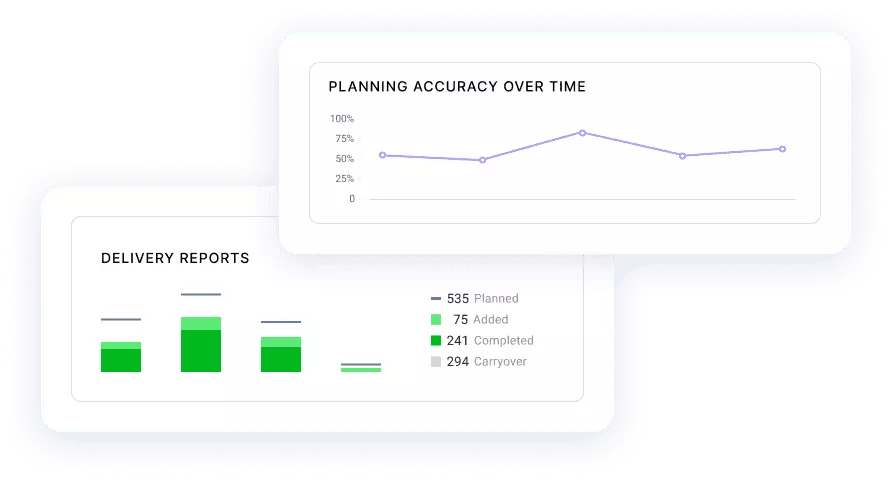 Using LinearB’s Project Delivery Tracker can help you visualize unplanned work your team is doing each sprint and improve your planning accuracy. Book a demo today!
Using LinearB’s Project Delivery Tracker can help you visualize unplanned work your team is doing each sprint and improve your planning accuracy. Book a demo today!
2. Daily Standup
In the daily standup meeting, the goal is for team members to check in with one another so that they can give and receive help and ensure that there won’t be any conflicts in what people are working on.
Team leads rely upon the daily standup ceremony to answer that ever-important question: Are we on track to deliver on our promises? The issue with this is that it can detract from the daily standup.
It’s generally recommended that daily standups be time-boxed for 15 minutes. Status updates should only make up ⅓ of that, or 5 minutes total. But so often, status updates take much longer than 5 minutes.
To prevent daily standups from becoming simply status update meetings, you can leverage LinearB’s Pulse dashboard. This shows you the status of each issue/story in the sprint backlog as well how much work has been done on each one and when that work occurred.
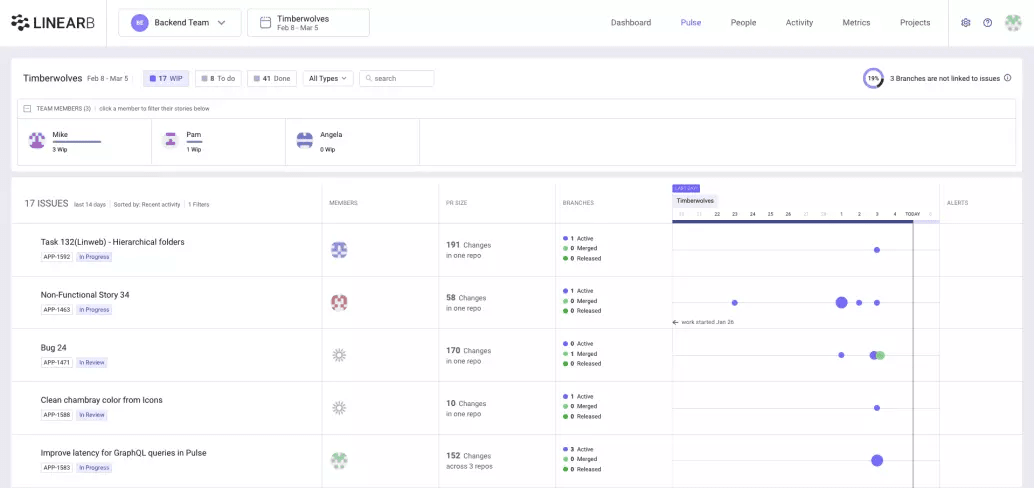
3. Sprint Review
The sprint review meeting is the time when the development team shows key stakeholders what they were able to accomplish during the sprint. Everyone then discusses these new product increments. The team uses that feedback to update the product backlog.
LinearB’s Investment Profile metrics captures precisely where your development team invested their time during a sprint. If you only highlight the number of functional features you shipped, it could very easily seem like the team didn’t get much done. But it could be the case that the team had to fix some huge bugs or pay-off some technical debt that was seriously slowing down progress.
The Investment Profile allows you to celebrate your team’s work, no matter where it was channeled!
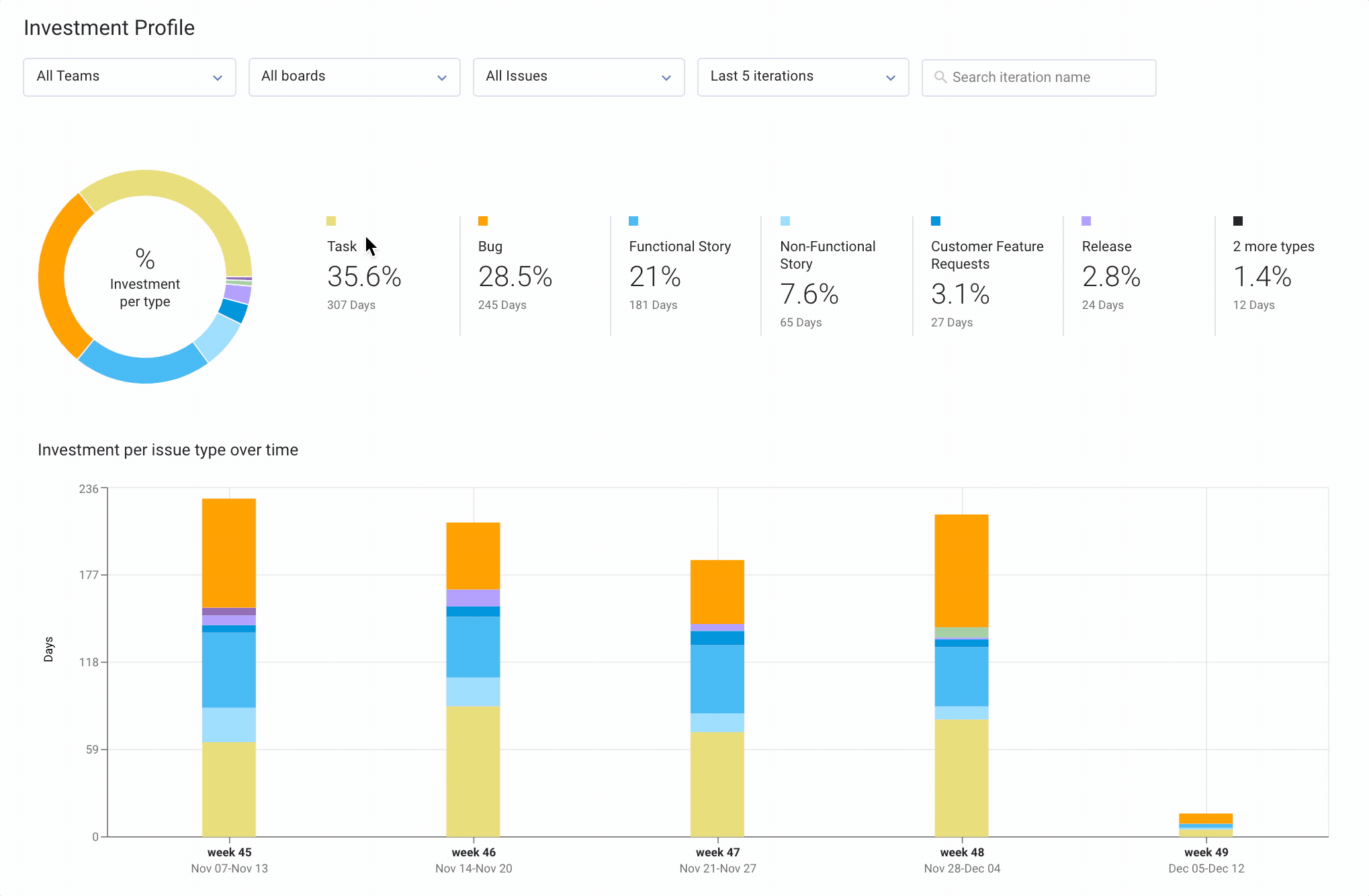
4. Sprint Retrospective
In the sprint retrospective, teams reflect on how they collaborated as a team in the sprint and where they could improve. This enables continuous improvement, which is a key principle in Agile.
A common challenge in sprint retrospectives is that it is easy to point fingers and play the “blame game.” There are lots of dependencies within software teams, which means that one person can easily become a bottleneck for one or more of their teammates. Addressing those individual-level issues generally does more harm than good.
The better approach is to stay focused on the performance of the team as a whole. Metrics are great for this. But metrics alone only get you so far. You also need to know whether a particular metric is good or bad, and for that you need benchmarks.
In LinearB’s groundbreaking Engineering Benchmarks Study, we analyzed 847,000+ branches from almost 2,000 teams to establish benchmarks for 9 key engineering metrics.
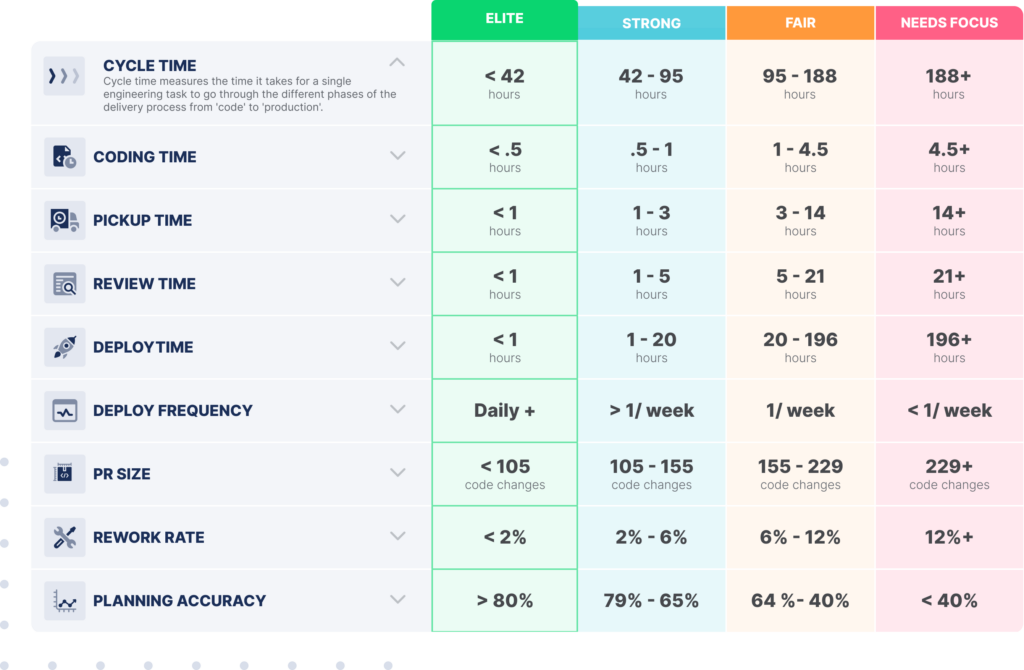 Want to learn more about being an elite engineering team? Check out this blog detailing our engineering benchmarks study and methodology.
Want to learn more about being an elite engineering team? Check out this blog detailing our engineering benchmarks study and methodology.
In addition to that, we’ve also recently released our Team Goals system. This enables you to leverage our metrics and benchmarks to set goals for your team. LinearB tracks your progress against those goals – and gives you tools like our WorkerB automation bot that help you achieve them – so that your team knows how they are executing.
Team Goals can serve as the basis for your sprint retrospective. They tell you, objectively and accurately, how the whole team performed against goals that the team itself set.
Improving Your Agile Ceremonies
Agile ceremonies are essential parts of the Agile methodology. The ceremonies, when done well, go a long way in ensuring that you are doing Agile right.
With metrics, data-driven insights, and Team Goals, LinearB gives you what you need to run highly-effective ceremonies and build high-performing engineering teams.
To learn about all the ways LinearB can help you improve all your development processes, reach out to set up some time for a demo.
 Want to improve your engineering processes at every level? Get started with a LinearB free-forever account today!
Want to improve your engineering processes at every level? Get started with a LinearB free-forever account today!


